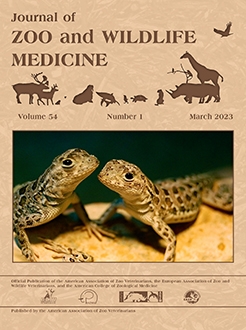The big brown bat (Eptesicus fuscus; EPFU) is widely distributed throughout the Americas and plays critical roles in sustaining cave ecosystems and abating agricultural pests. In Wisconsin, EPFU is a threatened species with declining populations due to hibernacula disturbances, wind turbines, and habitat destruction. Due to their ecological and economic value, it is important to be able to release EPFU that enter wildlife rehabilitation centers back to the wild. This study evaluated the medical records of 454 EPFU (275 male, 179 female) admitted to a wildlife rehabilitation center in Wisconsin from 2015 to 2020. For each bat, the season at intake, examination findings, length of time in rehabilitation, and final outcome (released or not released) were recorded. Using a multiple variable logistic regression model, there was a statistically significant positive association between length of time in the rehabilitation center and likelihood of release (odds ratio [OR] 1.08; 95% CI 1.06–1.12); this association can be explained by the need to overwinter some otherwise healthy bats in rehabilitation during hibernation. The following examination findings were associated with a significantly lower likelihood of release: wing injury (OR 0.32; 95% CI 0.10–0.89) and decreased body condition (OR 0.29; 95% CI 0.12–0.64). When corrected for time spent in rehabilitation (potentially artificially lengthened due to hibernation), patients admitted in the summer and fall were less likely to be released than those admitted in the winter (OR 0.93; 95% CI 0.90–0.96 and OR 0.95; 95% CI 0.92–0.97, respectively). The results of this study can be used to help veterinarians and licensed rehabilitators better triage EPFU during admission to wildlife rehabilitation centers in order to improve management and promote successful release back to the wild.
How to translate text using browser tools
20 March 2023
FACTORS IMPACTING SUCCESSFUL REHABILITATION OF BIG BROWN BATS (EPTESICUS FUSCUS) IN A WISCONSIN WILDLIFE REHABILITATION CENTER: A 5-YEAR RETROSPECTIVE
Rashea L. Minor,
Dörte Döpfer,
Erin M. Lemley,
Mary Irene Thurber
ACCESS THE FULL ARTICLE





